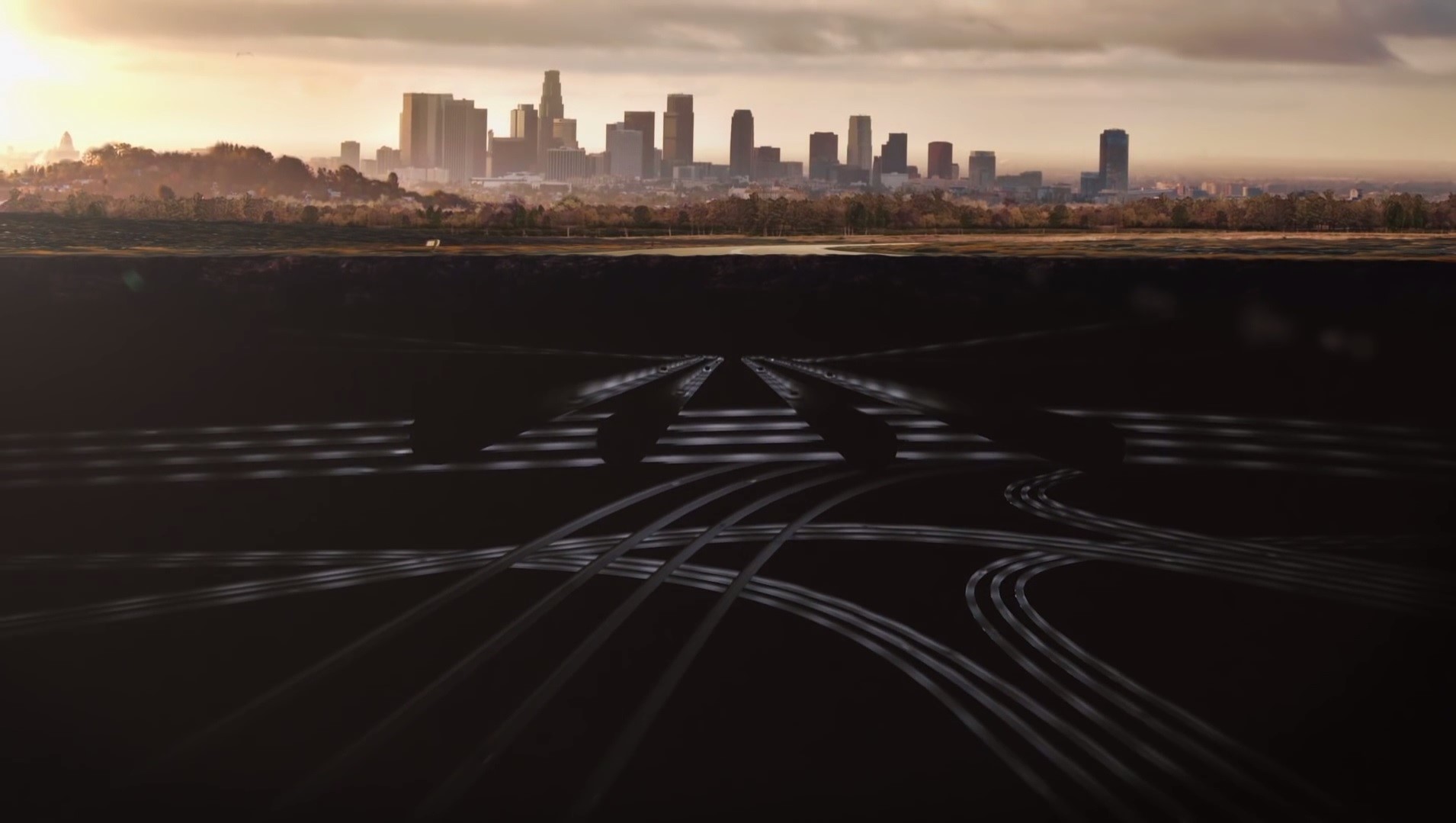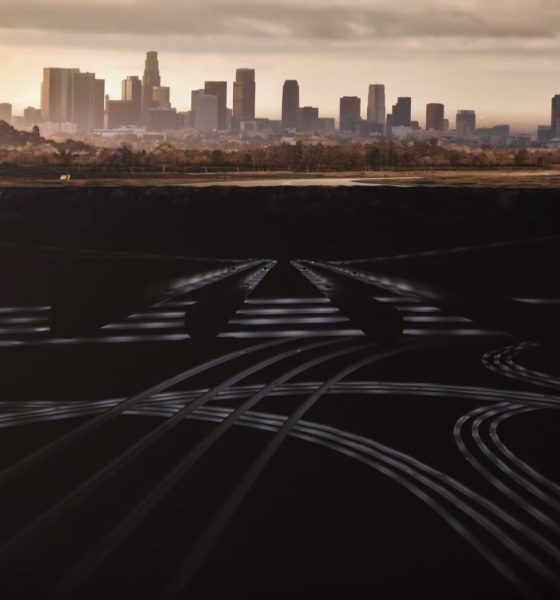

News
The Boring Co. Chicago tunnel project under discussion with DOT officials
The Boring Company’s plans of building a high-speed underground transit system connecting downtown Chicago and O’Hare airport has taken a step forward, with Chicago Mayor Rahm Emanuel meeting with senior Department of Transportation officials on Monday. The meeting, which lasted for an hour, was held at the DOT headquarters in Washington.
“Mayor Emanuel provided DOT officials with an update on the Chicago Loop project. Chicago reaffirmed that there will be no federal funds involved. All parties agreed to work together and stay in close communication,” a DOT spokesman confirmed with Reuters on Thursday.
The Chicago Mayor met with several senior DOT officials, including Federal Railroad Administrator Ron Batory and Undersecretary of Transportation for Policy Derek Kan. The discussions reportedly covered several topics, such as the specific type of environmental review the high-speed underground tunnels would require, which transportation agency will oversee the project, and if the department would tap a specific person to oversee the approval of the tunnels’ permits.
The Chicago-O’Hare transit system is the Boring Company’s first high-profile undertaking. According to Tesla and SpaceX CEO Elon Musk, the Chicago tunnel, which will be more than 17 miles long, would cost roughly $1 billion to construct. The entire project will be privately funded, with no subsidies from taxpayers. As noted by Elon Musk in a press conference in Chicago, the initial digging on both sides of the planned tunnel could start in as early as three to four months. Musk expects the tunnel to be operational in 18-24 months after the initial digging.
The high-speed underground transit line is an opportunity for the Boring Company to flex its creative muscles and prove to the market that it is a serious player in the transportation industry. Prior to winning the contract in Chicago, the tunneling startup has only been involved in the construction of a test tunnel under the SpaceX headquarters in Hawthorne, CA, as well as a proposed proof-of-concept tunnel that is expected to run across Culver City in CA. With the Chicago-O’Hare project, however, the tunneling startup can ultimately prove that Elon Musk’s concept of an underground transit line is feasible and effective.
Based on the details that have been released about the project thus far, the Boring Co.’s Chicago initiative is set to showcase some impressive technology. The pods that will be used for the tunnels, for example, will be designed and manufactured by Tesla, a company that Musk heads. Each pod is capable of transporting up to 16 passengers at a time at speeds of up to 150 mph, thanks to an eight-wheel design that would be fitted on the sides of the vehicle. Travel time from downtown Chicago to O’Hare airport through the Boring Company’s tunnels is estimated to take around 12 minutes, far shorter than the 30-45 minutes the trip usually takes through conventional modes of transportation.
The Boring Company might be considered as a side project or hobby of Elon Musk, but the potential of the tunneling startup is substantial. Berenberg analyst Alexander Haissl, for one, noted that if the company does finish the Chicago-O’Hare tunnel, it could raise the Boring Company’s valuation to as much as $16 billion.

News
Tesla (TSLA) receives “Buy” rating and $551 PT from Canaccord Genuity
He also maintained a “Buy” rating for TSLA stock over the company’s improving long-term outlook, which is driven by autonomy and robotics.

Canaccord Genuity analyst George Gianarikas raised his Tesla (NASDAQ:TSLA) price target from $482 to $551. He also maintained a “Buy” rating for TSLA stock over the company’s improving long-term outlook, which is driven by autonomy and robotics.
The analyst’s updated note
Gianarikas lowered his 4Q25 delivery estimates but pointed to several positive factors in the Tesla story. He noted that EV adoption in emerging markets is gaining pace, and progress in FSD and the Robotaxi rollout in 2026 represent major upside drivers. Further progress in the Optimus program next year could also add more momentum for the electric vehicle maker.
“Overall, yes, 4Q25 delivery expectations are being revised lower. However, the reset in the US EV market is laying the groundwork for a more durable and attractive long-term demand environment.
“At the same time, EV penetration in emerging markets is accelerating, reinforcing Tesla’s potential multi‑year growth runway beyond the US. Global progress in FSD and the anticipated rollout of a larger robotaxi fleet in 2026 are increasingly important components of the Tesla equity story and could provide sentiment tailwinds,” the analyst wrote.
Tesla’s busy 2026
The upcoming year would be a busy one for Tesla, considering the company’s plans and targets. The autonomous two-seat Cybercab has been confirmed to start production sometime in Q2 2026, as per Elon Musk during the 2025 Annual Shareholder Meeting.
Apart from this, Tesla is also expected to unveil the next-generation Roadster on April 1, 2026. Tesla is also expected to start high-volume production of the Tesla Semi in Nevada next year.
Apart from vehicle launches, Tesla has expressed its intentions to significantly ramp the rollout of FSD to several regions worldwide, such as Europe. Plans are also underway to launch more Robotaxi networks in several more key areas across the United States.
News
Waymo sues Santa Monica over order to halt overnight charging sessions
In its complaint, Waymo argued that its self-driving cars’ operations do not constitute a public nuisance, and compliance with the city’s order would cause the company irreparable harm.

Waymo has filed a lawsuit against the City of Santa Monica in Los Angeles County Superior Court, seeking to block an order that requires the company to cease overnight charging at two facilities.
In its complaint, Waymo argued that its self-driving cars’ operations do not constitute a public nuisance, and compliance with the city’s order would cause the company irreparable harm.
Nuisance claims
As noted in a report from the Los Angeles Times, Waymo’s two charging sites at Euclid Street and Broadway have operated for about a year, supporting the company’s growing fleet with round-the-clock activity. Unfortunately, this has also resulted in residents in the area reportedly being unable to sleep due to incessant beeping from self-driving taxis that are moving in and out of the charging stations around the clock.
Frustrated residents have protested against the Waymos by blocking the vehicles’ paths, placing cones, and “stacking” cars to create backups. This has also resulted in multiple calls to the police.
Last month, the city issued an order to Waymo and its charging partner, Voltera, to cease overnight operations at the charging locations, stating that the self-driving vehicles’ activities at night were a public nuisance. A December 15 meeting yielded no agreement on mitigations like software rerouting. Waymo proposed changes, but the city reportedly insisted that nothing would satisfy the irate residents.
“We are disappointed that the City has chosen an adversarial path over a collaborative one. The City’s position has been to insist that no actions taken or proposed by Waymo would satisfy the complaining neighbors and therefore must be deemed insufficient,” a Waymo spokesperson stated.
Waymo pushes back
In its legal complaint, Waymo stated that its “activities at the Broadway Facilities do not constitute a public nuisance.” The company also noted that it “faces imminent and irreparable harm to its operations, employees, and customers” from the city’s order. The suit also stated that the city was fully aware that the Voltera charging sites would be operating around the clock to support Waymo’s self-driving taxis.
The company highlighted over one million trips in Santa Monica since launch, with more than 50,000 rides starting or ending there in November alone. Waymo also criticized the city for adopting a contentious strategy against businesses.
“The City of Santa Monica’s recent actions are inconsistent with its stated goal of attracting investment. At a time when the City faces a serious fiscal crisis, officials are choosing to obstruct properly permitted investment rather than fostering a ‘ready for business’ environment,” Waymo stated.
News
Tesla FSD v14.2.2 is getting rave reviews from drivers
So far, early testers have reported buttery-smooth drives with confident performance, even at night or on twisty roads.

Tesla Full Self-Driving (Supervised) v14.2.2 is receiving positive reviews from owners, with several drivers praising the build’s lack of hesitation during lane changes and its smoother decision-making, among others.
The update, which started rolling out on Monday, also adds features like dynamic arrival pin adjustment. So far, early testers have reported buttery-smooth drives with confident performance, even at night or on twisty roads.
Owners highlight major improvements
Longtime Tesla owner and FSD user @BLKMDL3 shared a detailed 10-hour impression of FSD v14.2.2, noting that the system exhibited “zero lane change hesitation” and “extremely refined” lane choices. He praised Mad Max mode’s performance, stellar parking in locations including ticket dispensers, and impressive canyon runs even in dark conditions.
Fellow FSD user Dan Burkland reported an hour of FSD v14.2.2’s nighttime driving with “zero hesitations” and “buttery smooth” confidence reminiscent of Robotaxi rides in areas such as Austin, Texas. Veteran FSD user Whole Mars Catalog also demonstrated voice navigation via Grok, while Tesla owner Devin Olsen completed a nearly two-hour drive with FSD v14.2.2 in heavy traffic and rain with strong performance.
Closer to unsupervised
FSD has been receiving rave reviews, even from Tesla’s competitors. Xpeng CEO He Xiaopeng, for one, offered fresh praise for FSD v14.2 after visiting Silicon Valley. Following extended test drives of Tesla vehicles running the latest FSD software, He stated that the system has made major strides, reinforcing his view that Tesla’s approach to autonomy is indeed the proper path towards autonomy.
According to He, Tesla’s FSD has evolved from a smooth Level 2 advanced driver assistance system into what he described as a “near-Level 4” experience in terms of capabilities. While acknowledging that areas of improvement are still present, the Xpeng CEO stated that FSD’s current iteration significantly surpasses last year’s capabilities. He also reiterated his belief that Tesla’s strategy of using the same autonomous software and hardware architecture across private vehicles and robotaxis is the right long-term approach, as it would allow users to bypass intermediate autonomy stages and move closer to Level 4 functionality.








